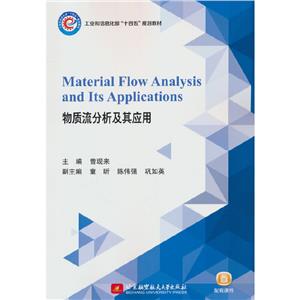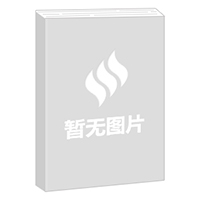掃一掃
關注中圖網
官方微博
本類五星書更多>
-
>
中醫基礎理論
-
>
高校軍事課教程
-
>
思想道德與法治(2021年版)
-
>
毛澤東思想和中國特色社會主義理論體系概論(2021年版)
-
>
中醫內科學·全國中醫藥行業高等教育“十四五”規劃教材
-
>
中醫診斷學--新世紀第五版
-
>
中藥學·全國中醫藥行業高等教育“十四五”規劃教材
物質流分析及其應用 版權信息
- ISBN:9787512440869
- 條形碼:9787512440869 ; 978-7-5124-4086-9
- 裝幀:平裝-膠訂
- 冊數:暫無
- 重量:暫無
- 所屬分類:>>
物質流分析及其應用 內容簡介
本教材將從多學科交叉角度出發,反映世界科學前沿和新技術、新產業發展成就,在生態安全、資源安全、產業安全背景下,考慮我國雙循環發展格局以及碳達峰、碳中和的戰略目標;第二,本教材將從理論角度,對物質流分析框架進行深入揭示,從數學角度,闡述數據收集
物質流分析及其應用 目錄
Chapter 1 Introduction
1.1 Scope and boundary
1.2 Concept and history of material flow analysis
1.2.1 Concept and classification of MFA
1.2.2 History and development of MFA
1.3 Biogeochemical cycle
1.3.1 Resource stock
1.3.2 Cycling of elements
1.4 Industrial ecology and anthropogenic metabolism
1.4.1 Industrial ecology
1.4.2 Anthropogenic metabolism
1.5 Motivation and objective for material flow analysis
1.5.1 Motivation
1.5.2 Objective
1.6 Further reading
1.7 Exercises
Chapter 2 Methodology of Material Flow Analysis
2.1 Basic term and theory of fundamental science
2.1.1 Basic term and definition
2.1.2 The law of conservation of mass
2.1.3 The law of anthropogenic circularity
2.2 Procedure of material flow analysis
2.2.1 The objectives and system determination
2.2.2 The framework and data inventory
2.2.3 Estimating the unknown data
2.2.4 MFA diagram and its interpretation
2.3 Uncertainty and sensitivity analysis
2.3.1 Data error and distribution
2.3.2 The identified approaches for uncertainty analysis
2.3.3 Mathematic methods for uncertainty analysis
2.3.4 Sensitivity analysis
2.4 Main software of material flow analysis
2.4.1 STAN
2.4.2 e! Sankey
2.4.3 A weh-based approach
2.5 Further reading
2.6 Exercises
Chapter 3 Applications and Case Studies
3.1 Resource management
3.1.1 Material flow analysis for metals
3.1.2 Material flow analysis for plastics
3.2 Environmental management for pollution controlling
3.2.1 Anthropogenic phosphorus runoff
3.2.2 MFA of phosphorus in China
3.2.3 Implications
3.3 Industrial manufacturing and production
3.3.1 Qualitative material flow during manufacturing
3.3.2 MFA framework phases
3.3.3 Case study
3.4 MFA for green consumption
3.4.1 MFA for consumption process
3.4.2 Estimating method
3.4.3 Stock and waste generation
3.4.4 Validation
3.5 Waste management
3.5.1 Material flow analysis of mechanical separation treatments
3.5.2 Material flow analysis of incineration treatment
3.5.3 Material flow of China's whole process management of oily sludge
3.5.4 Implications for oily sludge management
3.6 Regional metabolism and management
3.6.1 Concept of regional metabolism
3.6.2 Economy-wide MFA for regional metabolism
3.6.3 Case studies: Regional Metabolism in Beijing
3.7 Further reading
3.8 Exercises
Chapter 4 Emerging Methods from Material Flow Analysis
4.1 Life cycle management
4.1.1 Concept from life cycle thinking
4.1.2 MFA as fundamental tool for life cycle management
4.1.3 Implementation of life cycle management
4.2 Life cycle cost
4.2.1 Concept and framework of life cycle cost in an environmental context
4.2.2 The calculation of life cycle cost
4.2.3 Case study: Life cycle cost analysis for recycling high-tech minerals from waste mobile phones in China
4.3 Cost-benefit analysis
4.3.1 Concept
4.3.2 Applying cost-benefit analysis with material flow analysis
4.3.3 Case study: costs-benefits of virgin and urban mining
4.4 Ecological efficiency
4.4.1 Concept of eco-efficiency
4.4.2 Measuring ecological efficiency with material flow analysis
4.4.3 Case study: eco-efficiency analysis of BASF
4.5 Statistical entropy analysis
4.5.1 Concept of statistical entropy
4.5.2 Measuring the recyclability of product waste
4.5.3 Statistical entropy analysis along material flow
4.6 Further reading
4.7 Exercises
Chapter 5 The Way Forward
5.1 Evolution of material flow analysis
5.1.1 Materials
5.1.2 Boundary
5.1.3 Environmental effect
5.1.4 Policy analysis
5.2 Emerging technologies and methods in related field
5.2.1 System analysis
展開全部
書友推薦
- >
中國人在烏蘇里邊疆區:歷史與人類學概述
- >
推拿
- >
上帝之肋:男人的真實旅程
- >
新文學天穹兩巨星--魯迅與胡適/紅燭學術叢書(紅燭學術叢書)
- >
巴金-再思錄
- >
史學評論
- >
月亮虎
- >
煙與鏡
本類暢銷


















